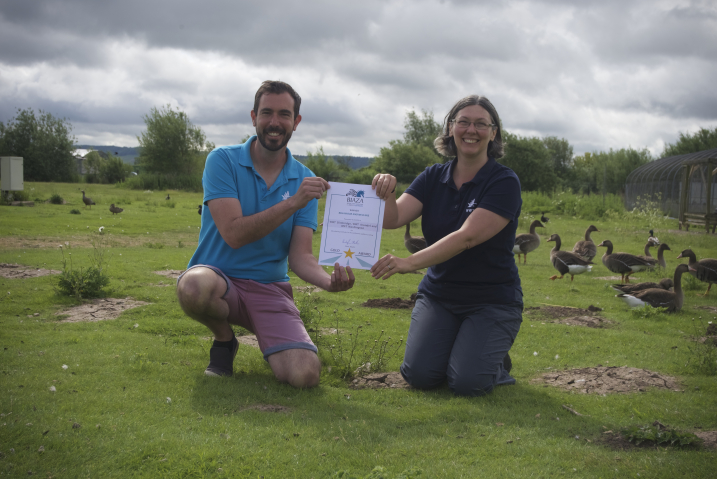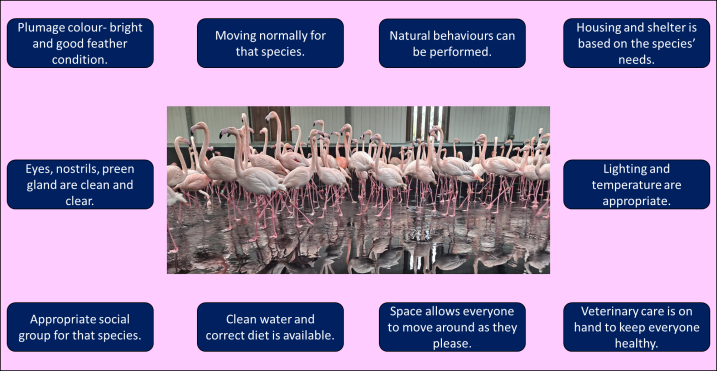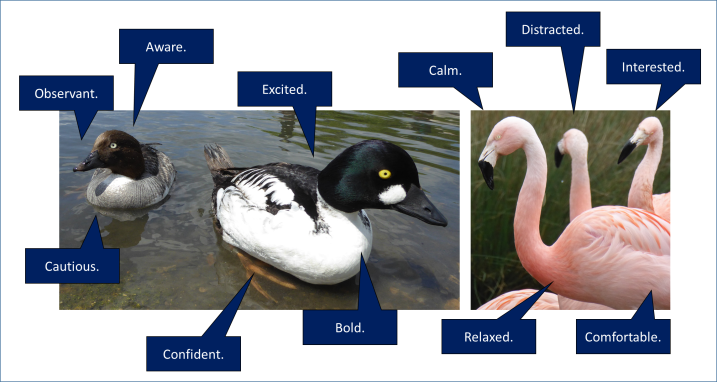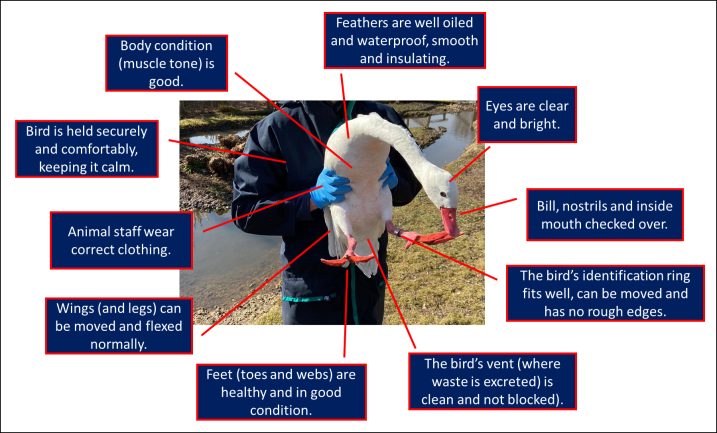When is a WWT flamingo a happy flamingo?
What is animal welfare? And how do we measure it? Why is WWT's bird welfare award winning. Find out more in this issue of the Flamingo Diary.
Despite the title, this post in the Flamingo Diary is relevant to all of the birds in the WWT living collections, not just the flamingos, as it explains our recent success in the 2021 BIAZA awards, with a project that we entered all about the behaviour and welfare of the birds in WWT’s collection.
One of the most important aspects of keeping any form of wild animal in a human managed environment, like the living collections at WWT, is to consider its wellbeing and how it lives it life. Right from when it is born or hatched, into its adult years and to the end of its lives, it's important to ensure welfare is good. Animal welfare is at the heart of the living collections at WWT- how they operate, how they function and how the animals are cared for on a daily basis. Animal welfare refers to how the animals are feeling, what they are provided with throughout the course of their lives, how they behave and what they can do in the space that they have, and how they respond to people around them (WWT’s visitors and the living collections staff, for example).
Every year, the British & Irish Association of Zoos and Aquariums, BIAZA, holds an awards competition for animal collections in the UK and Ireland to enter examples of good practice that they have been working on over that past year. The BIAZA Awards have numerous different categories, Education, Research, Conservation, Animal Husbandry to name a few. WWT have entered this competition previously and have been very successful in the Research category, winning gold awards in 2016 and 2019. For 2021, we entered the Animal Behaviour & Welfare category with a submission all about the welfare measuring work that many people, from vets to animal care staff, have been involved in over the past couple of year. Once again, its great to report that we won a Gold Award for this welfare focussed work.

WWT's 2021 Gold Award certificate in the Animal Behaviour & Welfare category with Dr Paul Rose and Dr Michelle O'Brien who authored and submitted the project on behalf of all of those involved.
To understand animal welfare we have to look at what the animals are doing as well as their physical health (what they look like, how they move around and the colour and condition of their feathers or fur, for example). This award-winning project not only set out to investigate the behaviour and the physical health of the birds, but also provided a means of looking into bird personality and mental health and wellbeing.

An example of what we mean by animal welfare and all of the factors that can influence how the bird is thinking, feeling or living in the environment.
Just the same as in humans, overall welfare is affected by mental health so it is important that we try to understand what animals are feeling. We can do this by looking at the moods that an individual bird is expressing. Looking at its posture, orientation and body language, we can describe the underlying mood of the bird- is it excited, anxious, interest, calm, comfortable, bold or worried for example.

How do we measure bird personality? By describing what its body language is telling us. How would you rate the mood of these two goldeneyes or three Chilean flamingos? One duck is more confident that the other (coming closer to the photographer), the other is more cautious and wants to see exactly what is going on before it decides to move forwards. Two of the flamingos are aware of the photographer's presence, but another bird is more interested in something else that's occurring in its enclosure. These measures of mood and inner feelings can tell us about a bird's mental state. When we measure these descriptions of the bird's personality again and again we can build a picture of what is "right" for that individual. And, if anything changes, we can do something about it.
Continuing to review the welfare of the birds at WWT, checking how they are interacting with other individuals in their flock and with the environment of their enclosure, as well as doing health checks and observing their mood gives useful data to make suitable to changes to how the animals are managed to keep them in the best conditions possible. The results from the welfare scoring of an individual bird go onto the permanent record for that animal so everyone can see how to best look after it. This is especially important if the bird moves to another animal collection- this record will travel with it, informing its new home about its specific needs and requirements.

All animals at WWT get a health check regularly and at certain times of the year, birds are caught and handled to help with this welfare and health checking in more details. An avian MOT as it were. We can ensure welfare is good for the animals by handling them properly and by looking for the different indicators of health and welfare show in the illustration.
The Gold Award from BIAZA is a the end results of collaboration between staff at WWT Slimbridge, WWT Washington and WWT Arundel, including many different species of bird and providing a means for other animal collections to follow if they wish to know more about what their birds need and how to provide the best conditions. It’s great for WWT to be recognised by BIAZA in this way as it is a real “stamp of approval” on the good quality care and management that the birds (and other animals) in a WWT living collection receive.
For those more scientifically minded, you can read the full scientific paper that resulted from WWT’s bird welfare work and was published in the journal Animals.



